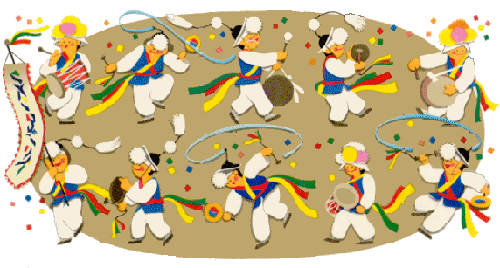
| History of Samulnori |
| Instruments |
| Types of Samulnori |
The music of Samulnori traces its roots to pungmul, traditional Korean performance. In pungmul, professional bands of 24 or more performers play. They usually include eight musicians playing instruments, eight dancers performing on hand-held drums (sogo), and eight actors who mimic various characters and the T'aep'yongso (conical oboe) players. Despite the fact that Pungmul was usually performed outdoor. Samulnori has become an indoor music as it was developed with its own format. Samulnori has gained international popularity as it continues to deliver the superb Korean music throughout the world. Not only does Samulnori express the rhythm of percussion but more importantly it is based on the principle of "excitement and relaxation" and "harmony of music notes". It is the mystery of Samulnori that when the beats get slow, it becomes extremely slow and when it reaches the end, the play gets incredibly fast. This slow and fast rhythm of Samulnori is due to the Korean music principle "excitement and relaxation".
(Source: http://english.chosun.com/english/contents/magazine/2000/Attraction200010_1.html)
|
![]()
Comments: kim68@indiana.edu
